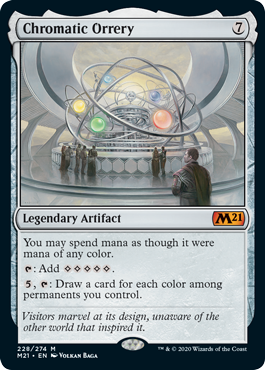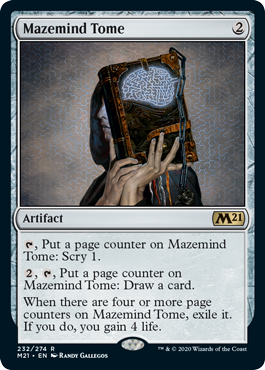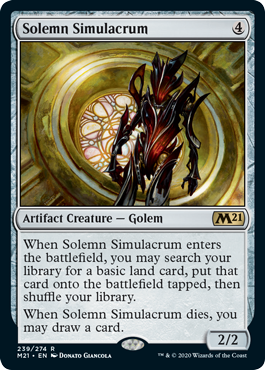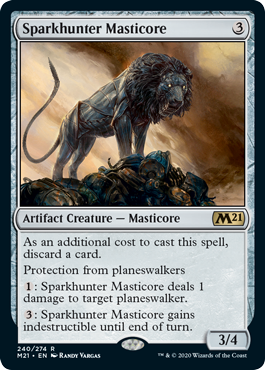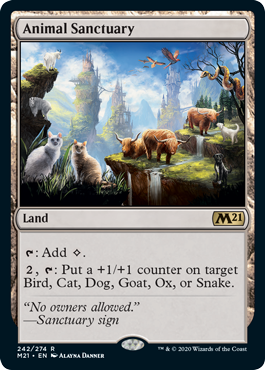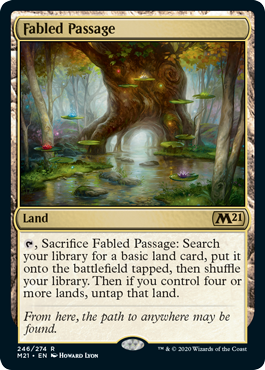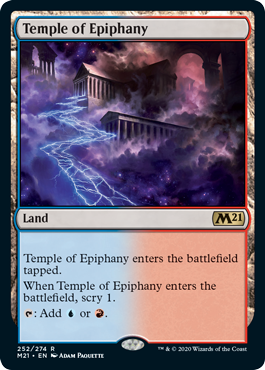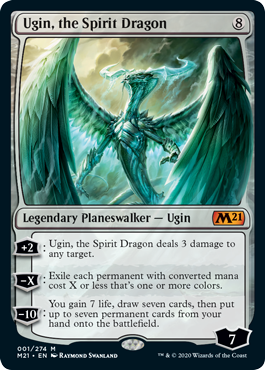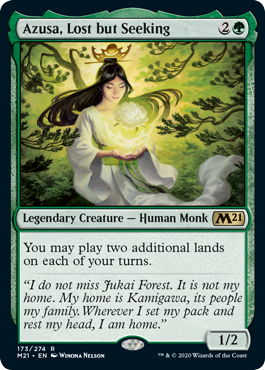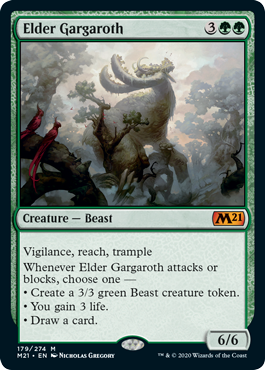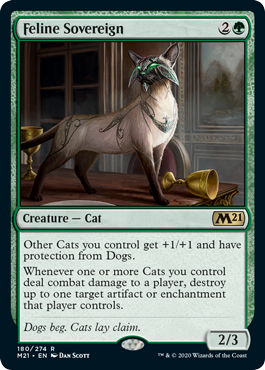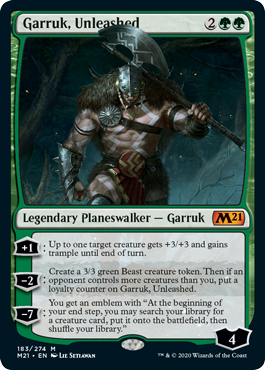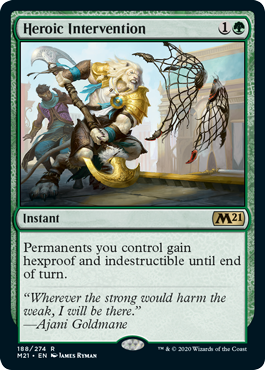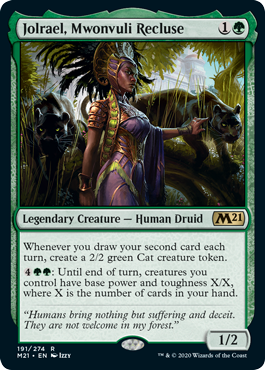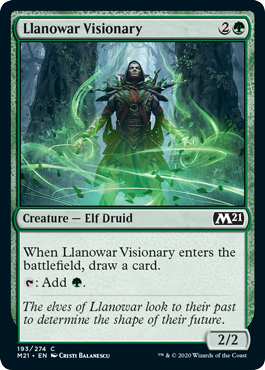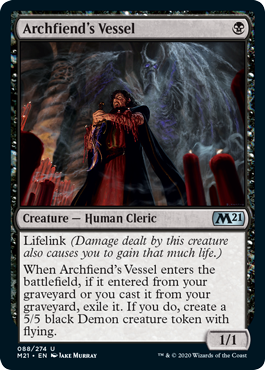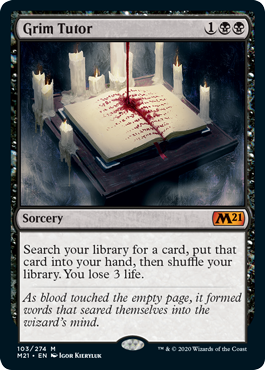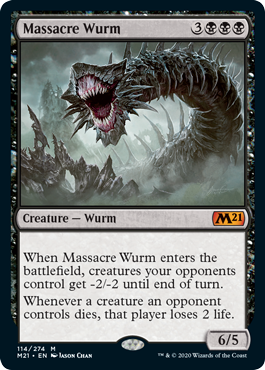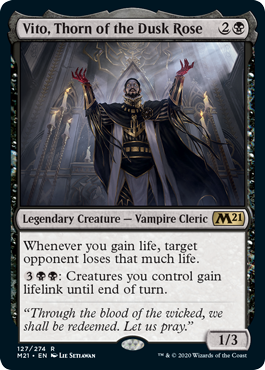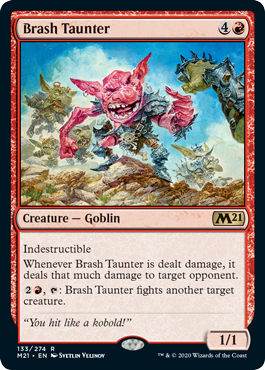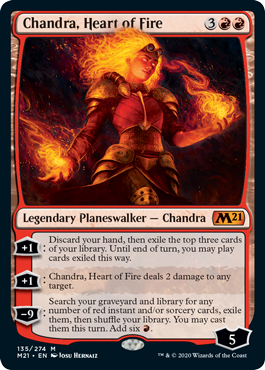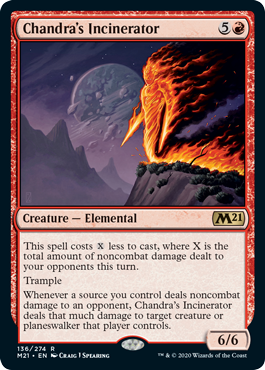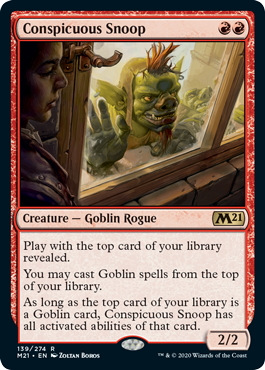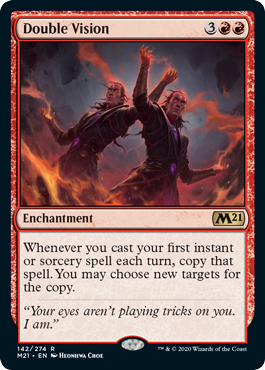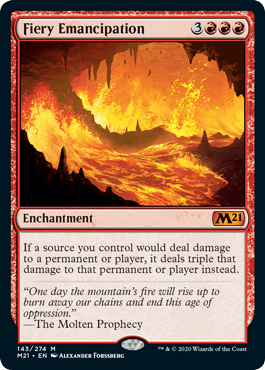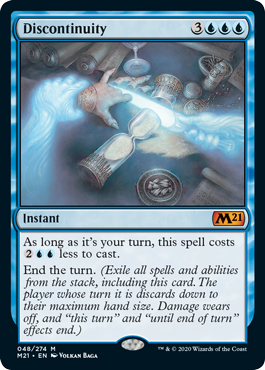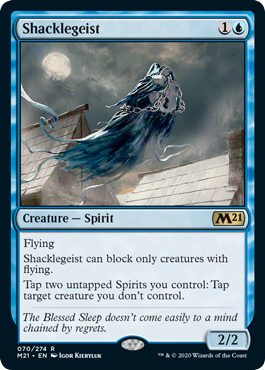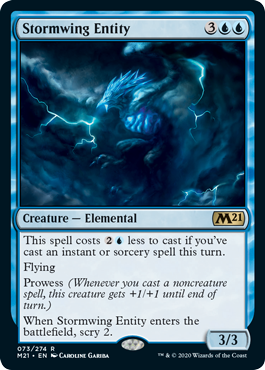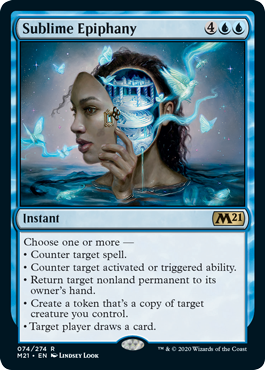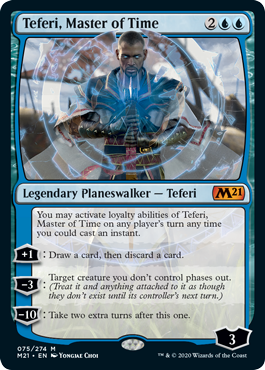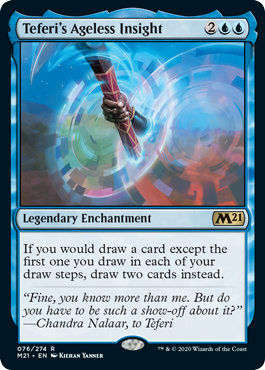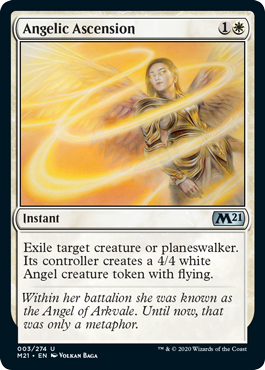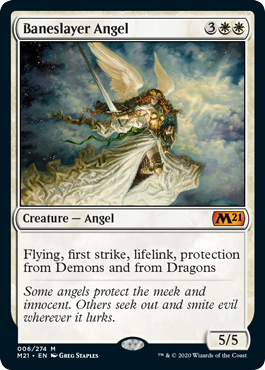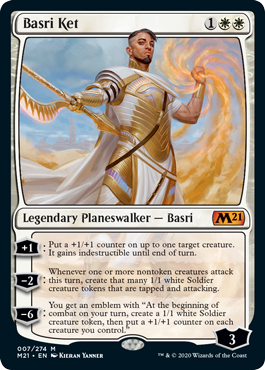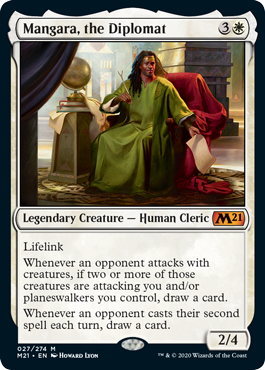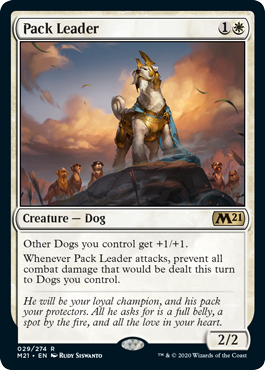What is also doubled, from the original Masters set all those years ago, Modern Masters, is the price of the packs in this set, as the original product back in 2013 was priced at seven bucks per pack and this latest rendition is now a WHOPPING fifteen a pop if you buy on an individual basis. Now, that price has incrementally gotten to its present day number over the course of the seven-year history of this product so it's not like this is a giant, jarring leap, but even back when the original Masters product hit at only seven dollars per pack that price was faced with a lot of scrutiny, until the set list was released and everyone saw just how insane the dollar values therein were and the hubbabalo died down a little. That changed later when vendors started breaking with the Manufacturer's Suggested Retail Price (MSRP) of the product and charging upwards of ten, hell I saw fifteen dollars a pack back then the product was so loaded and supply was just gobbled up instantly. People were wary about the product at first and then upset at it, but that ire stemmed from it being such a good value proposition it sold unbelievably and people wish they could get more, even at that eyebrow-raising buy-in price.
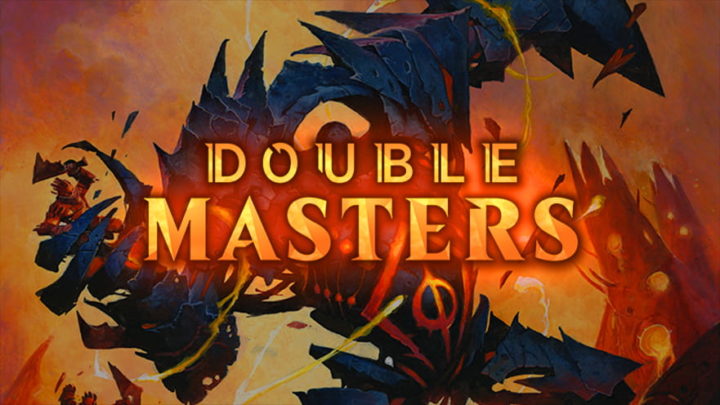
And so the price of the packs went up over the years because, well, Wizards saw the demand and they wanted a bigger cut and everyone started realizing just how much money was really flowing through the game of Magic during that time. Double Masters is the eighth time one of these products is hitting the shelf, it marks the eighth time people have raised their hackles over the price, and it marks the eighth time some really expensive cards are going to see significant price drops despite the controversy of the price point. That really is just the fact of the matter; Masters products succeed in what they set out to do every single time and that's to reduce the price of cards but doing so in a controlled way (so as to not bottom out the value of cards) at a premium price point that involves high-rollers who can afford that buy-in point churning the product out and the cards disseminating down to more affordable price points for everyone else. It is, quite simply, Magic: the Gathering version of trickle-down economics, except with a "children's" card game - not real life people's goddamn livelihoods - and that unlike its macroeconomic equivalent, it actually works, though with still terrible optics around it and not to the liking of people who think the game needs to be DRASTICALLY cheaper than it is at all times. But, like that oh-so-@#$%ing-wonderful Ronnie "Raygun" Reagan leftover that has shattered the American middle class, I don't think it needs to exist anymore and is kind of gross for similar and differing reasons alike.
I wrote a piece a few weeks ago about how Magic players are absolutely frothing at the mouth for a reduction in the expense of playing the game. And this year, this horrific, "anxiety attack taken physical form and going door-to-door to kick us all in the genitals" year, at the least marks one good thing; Magic the Gathering is seeing a tsunami of reprints and Double Masters is at the crest of that wave. The thing is, as spoilers for the set roll onward, we're seeing that the set is full of a lot of familiar players in the "Masters rolodex" of set lists, as Double Masters includes the likes of cards such as Karn, Liberated, Mana Crypt, Dark Confidant, Doubling Season, and other big hitters that have seen Masters reprints before and no longer feel "exciting." And the reason for that is because simply because Masters sets have become the Ouroboros of Magic, they're just a cycle of the snake eating its own tail. A card like, say, Sword of Fire and Ice was a modestly expensive card already back in 2013 priced around the mid-thirty dollar range (according to MTG Goldfish's price chart tracker), then it showed up in the original Modern Masters, was gobbled up immediately and saw a decent ten dollar drop, just to claw its way back up to a near eighty dollar price tag today because the only meaningful reprint for it the past several years was as a Kaladesh Masterpiece. Now, of course, with it's new printing it'll see another precipitous decline in price and people will have the a chance to buy the card at a price probably somewhere around it's 2014 price status after it started to rebound than it's near one hundred dollar price. Yes, this particular card I'm using as an example and those of its ilk will have have had two or three better buy in points to buy in over the past several years due to these Masters printings, but these Masters printings are also only a speed bump on the price of these cards. And I fully believe it's because of that business model that seeks to capitalize on the titular "Whales" of the Magic world that are willing to break the bank on an MTG product if they see a particularly intriguing potential Return on Investment in the contents therein or, especially now, there's a drool-worthy "chase"to be had.
Again, I do think Masters sets have most definitely been a force for good within the game, even with the plentiful wailing and gnashing of teeth that always surround them when they are announced. Magic is a special little nerd commodity in how its playability leads to collectibility which keeps the playability going because its fanbase can rest assured that when they spend some money on the game they can probably get a good chunk of that money back out of it if they ever quit or need to divest themselves of some of their collection for whatever reason; an emergency, a vacation, etc. That is why I am all about a reprint model that makes a substantial cut into the price of a card but that doesn't completely decimate it. Look, I'm as liberal a human as they come, I've spent my quarantine teaching myself my own shop lessons on guillotine making and everything, but even I don't think it does the game any good to plummet the value of every card that's like forty bucks to four and make it so Rares are never worth more than a couple ones and your local sales tax. But, that said, I don't think it also does any good to keep some of the most highly sought after cards in Magic locked into a pattern where they never potentially go from that forty dollar price point to anything less than twenty-five each and are stuck there because we perpetually are relying on more "flush" players to keep buying three hundred dollar boxes as Wizards of the Coast keeps dreaming up new equivalents to placing all your casino chips on 00 at the Roulette table and jamming them into packs that create a feeding frenzy for those who get off on the thrill of opening them or are sociopaths whose idea of a good time over a weekend is drowning in pack wrappings and hard sleeves as they flip as much as Simone Biles with a Tony Montana's worth of cocaine in her.
If this year has shown us anything, y'know, beyond what "creeping authoritarianism" is all about, it's that there are ways to reprint cards in a way that make cards way more affordable, that do so in ways that don't dramatically plummet those values so that people feel like they are out significant amounts of money with that reprint, and that don't rely on people to buy thousand dollar cases and race to the bottom to set a price bottom that maybe lasts a year. Mystery Boosters and Jumpstart were exemplary products that, if not hampered by production issues because of both the pandemic and Wizards of the Coast in general not seeming to understand that folks like products like that with cheaper buy-ins and juicy reprints, would have really hit the spot both from an in-store presence and driving down prices. Sets like Conspiracy and Battlebond in the past showed how well prices can be significantly diminished to good buy-in points by being reprinted in sets like those at prices around the normal four dollars a pack (or seven-ish for something like Mystery Booster) and that those prices will rebound, albeit on a longer timeline given the greater baseline supply of sets like those compared to a Masters set.

It really is quite simple, the game is better off when a card goes from forty to fifteen and then back to thirty than when it goes from forty to twenty-five and then back to forty again before the process repeats in both scenarios. People who move cards either for a living through their LGS or as a side hustle through maintaining a rotating inventory on Ebay or what have you will churn through cards just as well as always or have the opportunity to sit on them for a double up, players will have a lower buy-in point on staples, and, most importantly, packs will goddamn sell still. Yes, I'm not naive, I know why Masters sets are still the default, because it costs Wizards just as much to produce a set they will sell at fifteen a pack as it does four dollars a pack. That will always be the primary motivator of decisions Wizards makes and that's how business works. But with so many avenues for revenue when it comes to Magic, leaving the primary means of cheaper cards in the hands of people one person who can buy a three hundred dollar box instead of three people who can buy hundred dollar boxes. I'm a firm believer in "not every product is for everyone" when it comes to MTG, but locking people out of one of the more fun aspects of the game in "cracking packs," especially packs that can be used to balance the secondary market out with valuable reprints, seems like shooting yourself in the foot.
"Whales" should not be the first line of offense in attacking rising card prices. If you want to "exploit" the more well-to-do players and grab their dollars for pieces of cardboard, there are so many better outlets that Wizards has already developed and will definitely continue to find avenues for exploiting. Secret Lairs, for example, and even Collector's Boosters are probably a fine product to continue with, though even the latter needs a serious revamping because you're trying to entice people to buy two hundred dollar priced, twelve pack boxes for essentially twenty cards in them worth a damn since the foil commons and uncommons mean nothing now and neither do the Showcase C's and U's that bloat the packs. Regardless, Wizards, if you think you need to tout expensive box toppers on top of forty mythics in a set that gives you two rares or mythics per pack to sell the product, then you're really just selling box toppers to people so just mainline that shit. Save the Whales for that kind of product; box toppers, alt art, limited edition box sets, etc etc etc. There's so many ways to get their dollars and give them an item with a unique place in the market to fuel their desire to both feel "special" for owning it and wring their hands in capitalistic glee over the potential returns on their "high rollers club" exotic pieces of official MTG cardboard.
While Masters sets had their time and place, to the point that Wizards was even going to do away with them for a significant length of time before, well, someone got fidgety about a hole in their printing/revenue schedule, Double Masters should genuinely be one of the few times we ever see this variation of the product, if not the last. We are simply beyond this type of product in the year 2020, between the kinds of set designs Wizards has cooked up in the meantime that both create new cards balanced out with reprints to sell the sets, and just the avenues for reprints in general. Players have been so absolutely ravenous for reprints the past couple years and Wizards is finally getting there, even if Mother Nature said "haha, screw your production schedule" with a killer virus, and while I'm not naive and know the player base is going to bitch, kicking down a price barrier here when you have the chance knowing you can still have your high rollers by their affluent cahones is a PR win at the least and probably healthier for the longevity of the game by taking a hit margin-wise on a set a year but inflating the good will of your player base and keeping them around for a longer run. I know all that sounds like "Marxist hogwash" or whatever the hell you want to label it as, but I can't imagine what short term numbers are lost from the lack of a premium product like a Masters set a year isn't offset by someone staying the in game for an extra three or four because it becomes a bit more affordable and they're buying some Battlebond 2 (please, Wizards, make a goddamn Battlebond 2) with a spare hundred bucks they find instead of just not buying anything Masters because they were priced out. Wizards can have it all and benefit the players as well as long as they plan accordingly and Save the Whales for when they need them the most.
